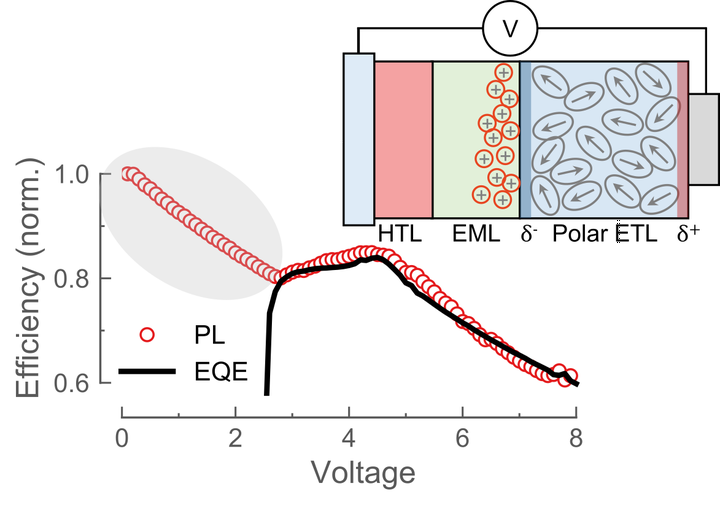Sub-turn-on Exciton Quenching Due to Molecular Orientation and Polarization in Organic Light-Emitting Devices
 Luminescence quenching occurs at biases below device turn-on due to orientation polarization.
Luminescence quenching occurs at biases below device turn-on due to orientation polarization.
Abstract
The efficiency of organic light-emitting devices (OLEDs) is often limited by roll-off, where efficiency decreases with increasing bias. In most OLEDs, roll-off primarily occurs due to exciton quenching, which is commonly assumed to be active only above device turn-on. Below turn-on, exciton and charge carrier densities are often presumed to be too small to cause quenching. Using lock-in detection of photoluminescence, we find that this assumption is not generally valid; in fact, luminescence can be quenched by >20% at biases below turn-on. We show that this low-bias quenching is due to hole accumulation induced by intrinsic polarization of the electron transport layer (ETL). Further, we demonstrate that selection of non-polar ETLs or heating during deposition minimizes these losses, leading to efficiency enhancements of >15%. These results reveal design rules to optimize efficiency, clarify how ultrastable glasses improve OLED performance, and demonstrate the importance of quantifying exciton quenching at low bias.